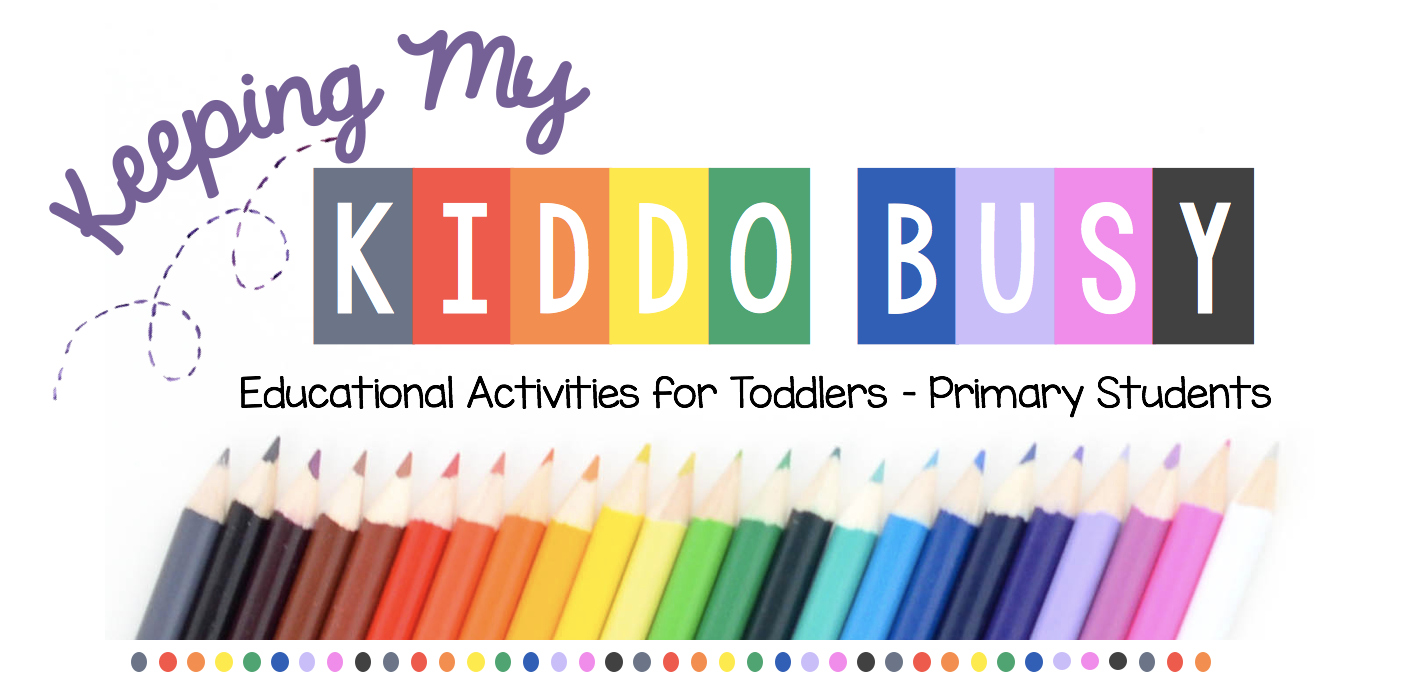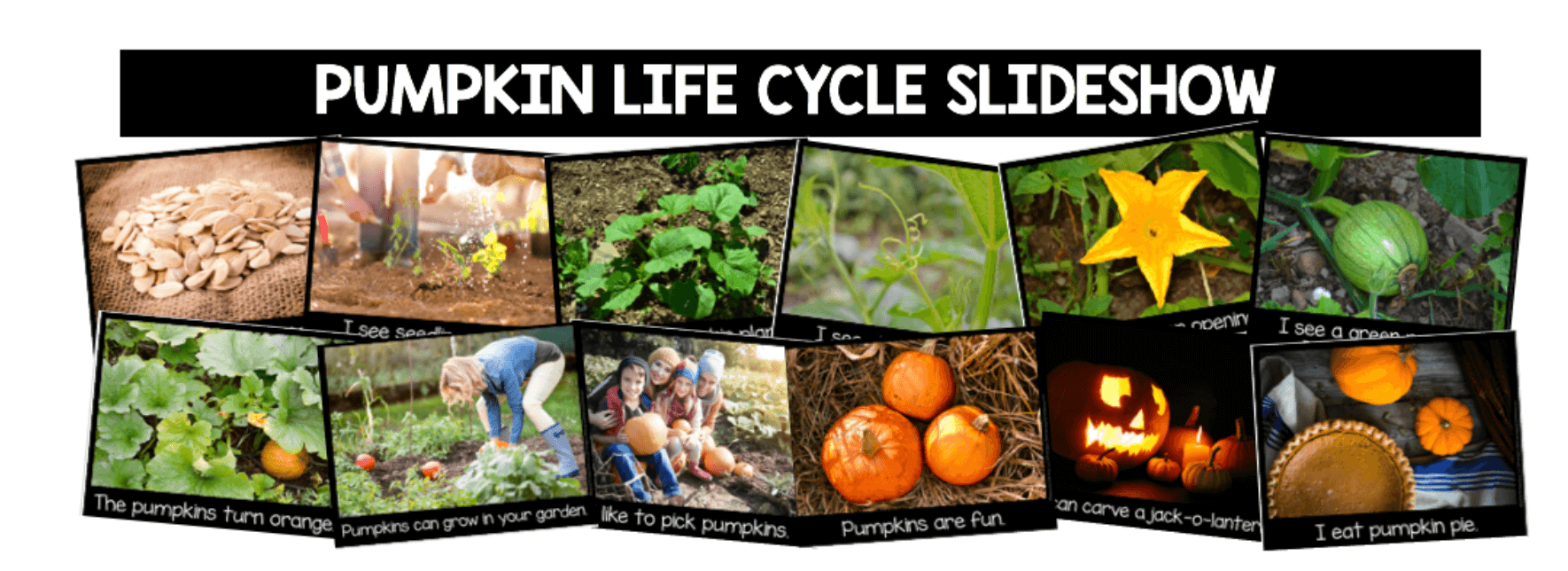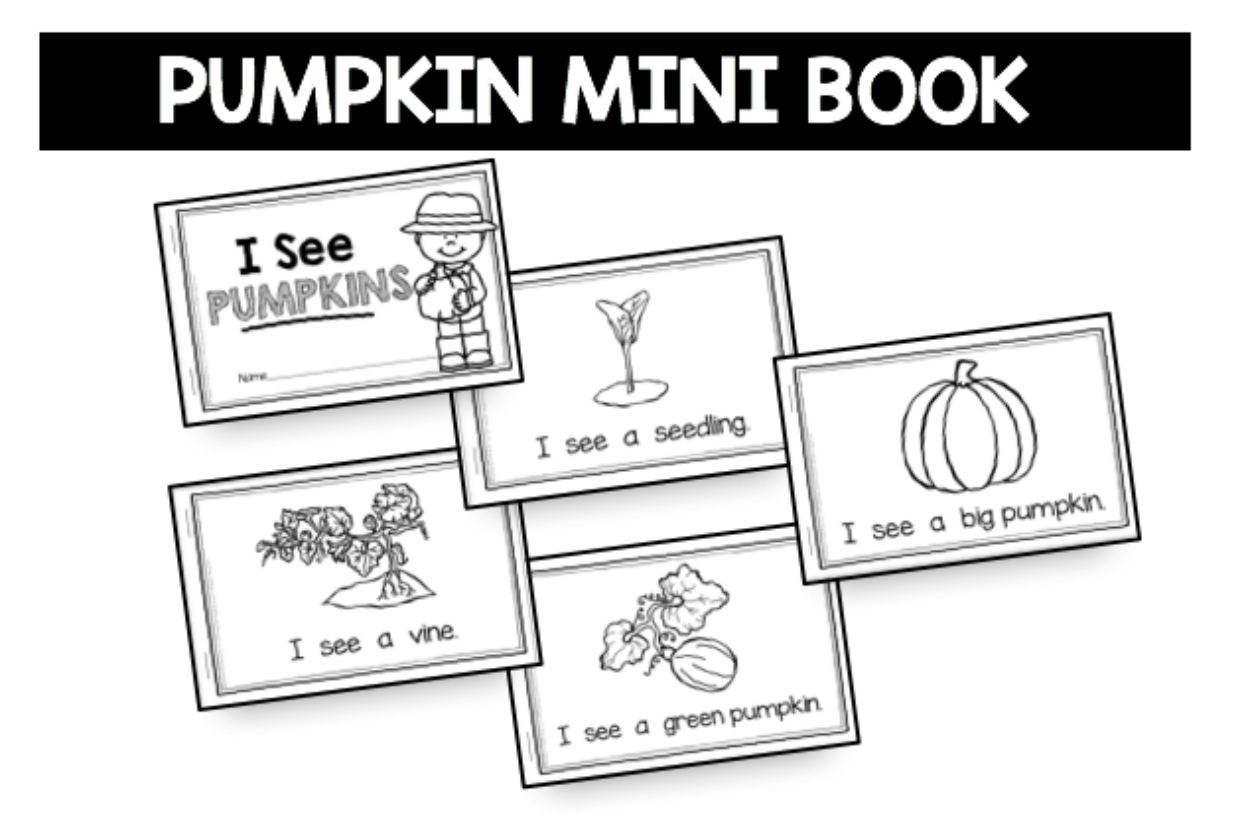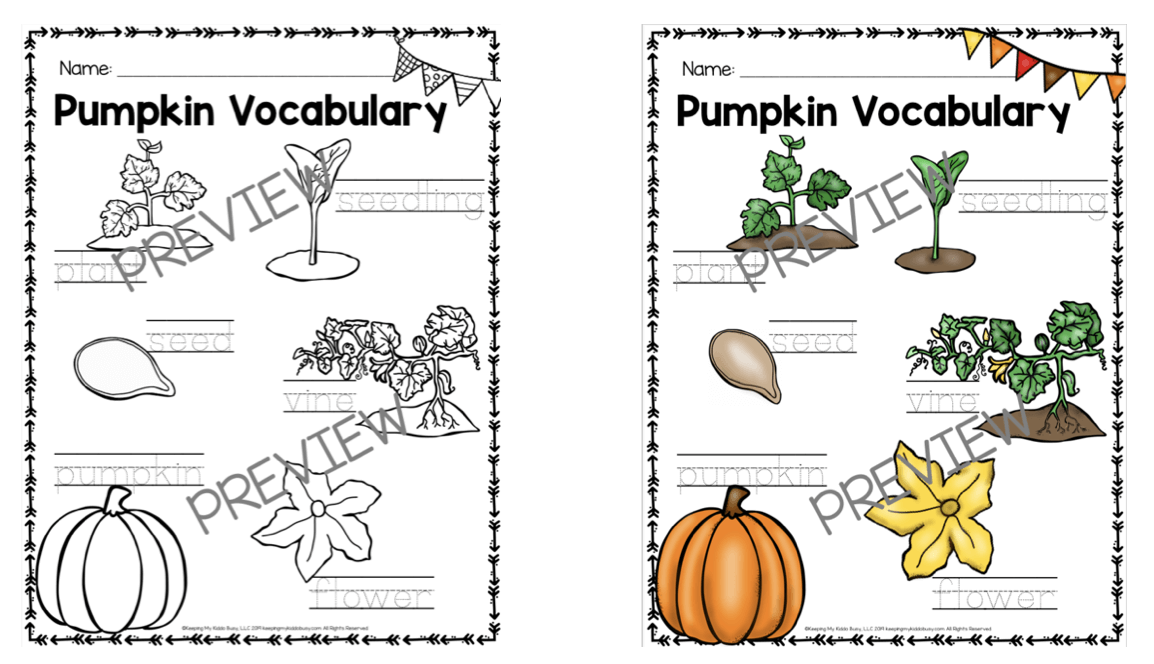October Week 1 - Free lesson ideas and tips
I am so happy October is here!
This is my birthday month, and I love the crisp, cool morning and warm afternoon.
Whether you’re homeschooling or in the classroom, by now the kids are humming along in their routine.
This makes teaching so much fun.
Have you printed my free lesson plans yet? They are available HERE
This page contains affiliate links. Read Full Disclosure
You can also visit my October lesson planning homepage HERE
We have so many fun things planned for the month!
This week we are working on:
putting numbers 1-10 in order
first sounds /h/ /d/ /j/ /t/
we are learning about the lifecycle of pumpkins (free printables on this blog post!)
we continue with our reading and handwriting lessons
we are starting to write lists using word banks
I am sharing FREE adorable Bugs and Kisses printables with you to get ready for all things October!
My goal with these new weekly blog posts is to share ideas, tips and tricks so your lessons are successful.
RULES AND ROUTINES
Quick review from September: I spend a lot of time - both in the classroom and now homeschooling this year setting up routines and procedures.
For me, it is worth the time in the beginning to “start as you intend to go” so the rest of the year your energy goes into teach and not managing behaviors.
If you’re in the classroom, I use THIS kit to teach classroom rules and expectations.
If you’re at home, you can use THIS free routine chart to keep your kids on track.
Children like to know what to expect each day.
LET’S GET STARTED!
What do you do first thing in the morning? To get their brains warmed up and in the mode for school, I love to use morning work. The trick is having printables they can be completely independent with.
Both at home and in the classroom, have morning chores to complete so morning work is not helpful for me if I have to stop constantly and give directions. Children will only need assistance about once a week when the concepts change.
These cover so many kindergarten standards, and the skills slowly build on each other to promote confidence and independence.
Kids know exactly what to do with these printables, so you can get your morning chores done - whether you’re at school or home.
See how these worksheets will transform your morning! Print a FREE WEEK from every month HERE
UPDATE: These are now compatible with Google Slides!
So many teachers are teaching virtually via distance learning, so you can use these now on the computer.
Both the printable and digital versions are included.
CALENDAR-WARM UP
Watch this quick video to see how I incorporate daily calendar, morning meeting (including SEL skills) plus daily phonics and math.
You’ll love having everything in one place, and the kiddos are engaged with embedded songs and moveable pieces!
CLICK HERE FOR OUR OCTOBER DIGITAL CALENDAR KIT
A new month means a new poem to memorize.
We practice the monthly poem during warm up/calendar time. If you’re homeschooling, you can do this anytime.
I believe poetry/memorization work is truly important.
BEST TIP: add movements/sign language and your students will memorize a poem in no time! Get them up, moving and memorizing poetry. This is so fun!
We practice the poem all month, and then my kiddos have poetry folder that we usually complete the monthly activities at the end of each month.
Read more about my poetry routine HERE
Use the poem to point out sight words, letters, capitals, and punctuation too. Practice rhyming words and CAP skills - this quick two minute warm up each day can provide so much instruction.
PHONICS
We are focusing on sounds /h/ /d/ /j/ /t/ this week.
Small bursts of practice, multiple times a day/week will give you better results with five and six year olds rather than one hour long lesson. Keep your lessons short and sweet to keep engagement high and behaviors low.
I warm up with phonemic awareness activities.
To see how I teach Onset and Rime, visit THIS blog post from September (we love talking like robots and breaking up sounds!)
I teach four letters/sounds at a time and I always start with the picture cards in the pocket chart.
You can play so many games with these picture cards, but sorting them works really well so they can hear the different sounds.
Have the kids help you sort them in a pocket chart or play matching games.
For example put four pictures up and have them match the two that have the same first sound.
Identifying phonemes (sounds) in the words is so important for a strong phonics foundation.
After the picture cards in the pocket chart, I move on to the printable activities from my first sounds unit.
I like to start with the first sound bubbles because children don’t have to write anything - they just color the correct bubble.
Then we do the cut/paste activities throughout the week and end with the writing first sounds. This is a good check for understanding.
Tying phonics to songs and movement will also give you much quicker results. That is just how our brains works.
Are you playing this video every day? My children love it.
While we are working on our phonics lessons, if they are stuck on a letter or sounds, all I have do it start humming the song and show them the movement and a little lightbulb goes off and they quickly remember the letter/sound.
Another favorite is, Who let the letters out?!
If you think your kids might be confused with two different songs/movements then just stick to one! But you can see from this video how kids connect phonics to the movement. I absolutely love whole brain teaching.
MATH
Just like with phonics, short bursts of practice will yield much quicker results. Repeated practice, with the same skills, over and over again. Consistency will build fluency with new concepts.
TIP: if your children are still struggling with writing and recognizing numbers, don’t be afraid to use these number sheets over and over again that we used in September. Some children need to do these multiple times for it to stick in the brain - writing numbers with correct directionality, showing 1:1 correspondence on ten frames, etc.
Students also need to be fluent with number lines. They need to know that going to the right the numbers get bigger and going to the left the number get smaller.
This helps so much with number sense.
We practice counting on number lines every single day.
I want my students to see if they go to the right, numbers get bigger and if they go to the left, numbers get smaller.
Understanding number lines will help so much when we start adding and subtracting.
Here are our printable activities this week:
I have a large number line always displayed.
These are large and come laminated so they work great for kids to use on their own.
I have them use these with little counting bears and I say, “Okay the baby bear is at 5. He hops up one more. What number is he at now?”
The kids love this game and we are practicing numeral recognition and number sense. It is a great hands on way to practice using a number line.
I also love THESE number lines.
I use THESE baby bear counters all year for math.
READING
How do I teach children to be confident, capable readers? I teach them that reading is FUN and I provide material in a format that they recognize and enjoy.
Every week, our routine stays the same, and we use these three resources:
I use a new theme each week, and this week it is APPLES (sometimes the first week of October spills over from the end of September.)
Here are all the themes for the month of October.
I use one theme per week so the content (vocabulary, sight words, etc.) change, but the format, routine and expectations stay the exact same.
For the entire school year, my guided reading consists of the same three materials:
Comprehension and fluency passage
Mini book
Sentence builder
I use these three resources throughout the week. Personally, I prefer this schedule:
Monday: introduce theme, vocabulary/sight words, I read the passage, we read it together
Tuesday: review words, we read together, they read on their own (whisper/buddy), answer comprehension questions
Wednesday: Sentence Builder
Thursday: Mini book, Review CAP skills - front cover, turning pages, holding a book properly, I read the book to them
Friday: We read the book together, buddy read, answer comprehension questions
I use these in my small groups, with all the reading levels! The beautiful thing is that you can use the same materials, and just differentiate your instruction based on their reading level. This allows me to spend more direct instruction time with my lower readers.
I recommend keeping guiding reading lessons short and sweet - 15 minutes or so per group per day.
Reading and writing go hand in hand, and I love this program because it ties the two together. You will get much faster results teaching reading and writing together.
Read the full blog post and try a week for FREE HERE
ALL ABOUT PUMPKINS - WEEK 1
To kick off our pumpkin unit, I start with our pumpkin life cycle slideshow.
I show one slide at a time and we read the sentence together (it comes in a PDF format so you can project it on your front board directly from your computer.)
We discuss the pictures and students tell me what they notice. They love seeing the pictures of pumpkins and the changes the plant goes through.
After we go through the slideshow the first time, I give students their coordinating mini book.
The book has sentences that are almost the exact same as the slideshow.
Students love to look at the pictures on the slideshow, and we go through it a bunch of times. This also helps with building their fluency by rereading the sentences.
Our book this week is From Seed to Pumpkin.
This book is perfect for kicking off your pumpkin unit. The slideshow was the perfect way to build your students’ background knowledge for this story.
Students have already been prepared with the vocabulary of the pumpkin life cycle, so they are super engaged and excited to read the story and share what they already know.
The story walks students through how pumpkin seeds grow and change into big, orange pumpkins!
If you don’t have the book, you can show it on youtube here:
After we read the story, we practice our pumpkin vocabulary.
These vocabulary charts are a great way for students to learn how to spell the words.
You can laminate the color version for a center our the black and white version is perfect for whole group our small groups.
This pumpkin vocabulary activity is differentiated for your students.
One version has students simply matching the words, and the other version is more advanced they actually have to sound out the word and place it where it belongs.
Now we are ready to put the pumpkin life cycle steps in order!
The sequencing cards below can be printed in the freebie library!
These FREE picture cards are perfect for a pocket chart! We print and laminate them and students can practice putting the steps in order.
Then they can cut, paste and color their own How Do Pumpkins Grow activity.
This comes in two differentiated versions as well - one where students match the words and one where students have to place them on their own. Use one or both!
This makes a perfect October center activity.
By the end of the week, your students will know their pumpkin vocabulary and the pumpkin life cycle!
OCTOBER NO PREP ACTIVITIES
I used to use math and literacy centers that used a lot of color ink and lamination. Keeping track of all of the pieces was so hard, and explaining directions to the kids each day took half the time.
No more! I now use no prep printable activities that target the exact skills we are working on each month.
The kids begin to recognize the formats month to month, so it saves me so much time giving directions.
These activities work well for sub tubs, fast finishers, extra practice and centers.
These cover reading, phonics, sight words, comprehension, math, writing and more!
Each week. choose a few for children to rotate through.
This week there are actually TWO FREEBIES for you to print. Love these freebies? Purchase the complete pack below!
It actually really doesn’t matter the other you us these activities in throughout the month.
Some students can complete these independently and some will need help.
To see how I manage behaviors and time during centers rotations, please visit THIS BLOG POST and scroll down to the no prep activities.
If you’re homeschooling, pick and choose what activities your child needs additional help with, or the ones that they are most interested in. Do not feel like you need to squeeze them all in!
To encourage students to take their time and do their best work during centers, at the end of the period, I always hold up and compliment certain student’s work so the whole class can see, “Wow! Look how Janie took her time to write so neatly and color in the lines! Great job, Janie!” Focus on the positive so all students can strive to meet your standards.
TIP: Sometimes choose students who may not have the neatest work, but ones who you can tell are trying hard to improve. Don’t always focus on the end result, but rather encourage those who are trying hard to get better - whether it be behavior or academics.
Have you printed my free super star behavior management system? This even works for homeschooling! It is available on THIS BLOG POST - just scroll down to the centers section.
WRITING
For handwriting, this week we are doing lesson 23-27.
If you are not on these exact same lessons - that is okay! Take your time, repeat lessons as needed and go at your own pace.
These lessons are sequential and build on each other, but there is no rush.
We have been practicing big lines and bunny jumps. Now we learn what a push up letter is. The key here is that their pencil DOES NOT get picked up. It stops and then pushes straight back up.
My kiddos rocked labeling and now we are moving on to writing lists!
To start, we do whole group activities. I ask them what is a list? I say, “Okay, when you started school, what was on your school supply list?” Start by connecting new to know… what is a list they are familiar with?
They will tell you: crayons, glue, pencils, etc.
Write a list for them with their suggestions, focusing on the CAP skills you’re using - starting on the left and write letters sequentially to the right. At the end of each word, hop to a new line. Talk to yourself out loud the entire time you’re doing this. Sound the words out for them.
Next, tell them you’re going to the grocery store. What should you get? Let’s make a list!
Repeat the process of thinking out loud and recording.
If you’re teaching virtually, homeschooling or in the classroom, the Making a List Boom Card deck is helpful for showing students that certain word belong together.
The next day, show these whole group. If you’re homeschooling, do this with your child.
Show the kids the colorful picture word bank, and tell them that they get to choose what their favorite red items are!
Eight items are on the word bank, but they only get to choose their top 5. The kids LOVE this and they love to compare their list with their friends. I remind them that all their lists SHOULD be different.
If you’re homeschooling, you should this with your child and then compare your lists.
If your child or students need an extension activity - have them flip their papers over and add more red items to their list.
If you don’t have this unit, you can read more about it HERE or the red list making activity is available in our FREEBIE LIBRARY.
The complete writing lists unit can be purchased HERE
DISTANCE LEARNING - LEARNING AT HOME
This new learn at home program can be used for homeschool, distance learning or in the classroom as daily review.
Similar to my morning work, the skills stay the same and slowly get progressively more difficult.
This allows for students to be independent most of the time. Parents or teachers only have to give a mini lesson every few days, and then assist on an as needed basis. Parents absolutely love this set up if their children are at home learning. Teachers love to use this in the classroom as a daily math warm up and daily reading warm up. Have these on student desks when they come in from recess to get them focused for your lesson.
They can color their star on the my tasks page as they complete their daily assignments. This works like a charm for student motivation (this is optional).
This week, we are practicing letters Uu-Yy by starting at the star and writing with correct directionality, letter sounds, matching, rhyming, numeral recognition, shapes, pattens, measuring and writing.
You can print an entire week for FREE, or learn more HERE. Due to popular requests, this program now spans the entire school year!
I am using this with my own daughter for homeschool this year. She tells me to go away and she wants to do it on her own!
Here are the boom cards we are using this month… perfect for the skills we are learning in October:
"My students loved this for their center time. They were engaged 100% of the time, and wanted to keep playing them. I have seen an improvement in remembering letter sounds and letter recognition.”
You can use these for whole group lessons, on computers or tablets for independent centers, for distance learning (parents can even have the app on their phone! The possibilities are endless.
Boom cards are self checking, engaging and provide so much scaffolding including audio on most decks.
Learn more HERE
JUST ADDED - FALL 2022 OCTOBER POCKET CHART CENTERS
I am adding new math and literacy centers this year! I am so excited to incorporate bilingual pocket chart centers.
These work so well for whole group lessons, small groups and independent centers.
Numbers, counting, ten frames, tally marks, capital and lowercase matching, the pumpkin lifecycle, concepts about print, editable sight words, onset and rime… plus so much more!
I love that follow up activities are included so you have accountability during center time.
FUN FREEBIE!
How adorable are these bugs and kisses? Perfect for an October treat!
Grab some realistic look bugs HERE and some kisses HERE
Print these free baggie toppers HERE
I also have an editable version available! Be sure to download the file to your computer and then open it in Adobe Reader (free) to edit.
CLICK HERE for the free editable tags
I hope these teaching tips make your week go smoother! My goal is to share ideas and tips every week on a blog post for the week coming up. This will take some stress off of you!
See you next week on the blog ❤️
Blessings,
Michala
NEW VIDEO!
My sweet friend, Devin, has used my kindergarten curriculum in her classroom for years, and she was kind enough to put together a little video walk through for this week’s activities.


































